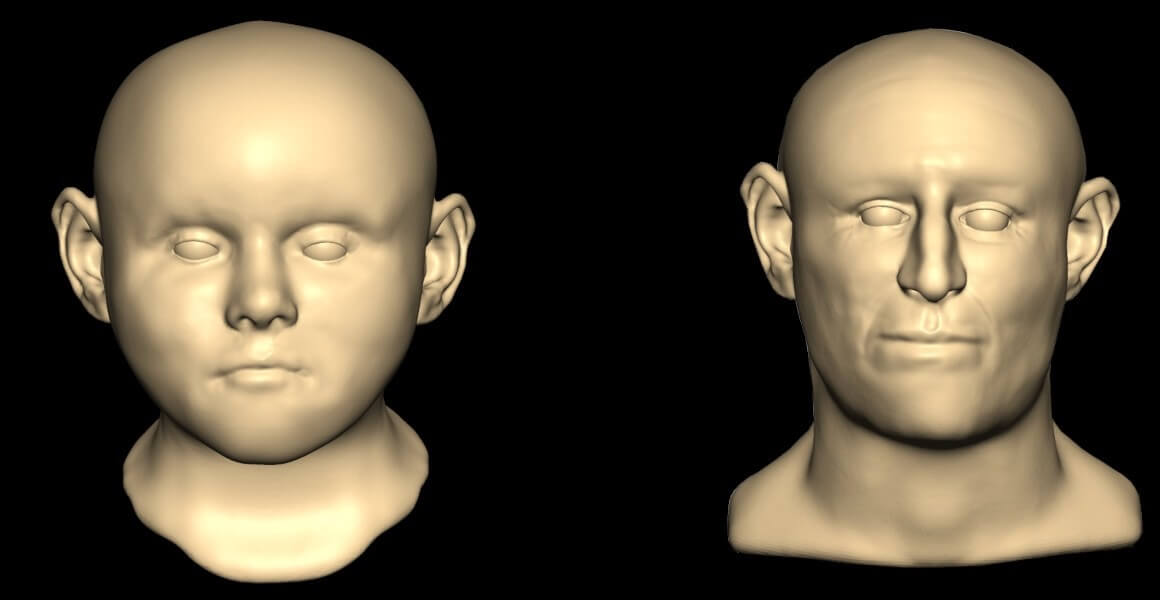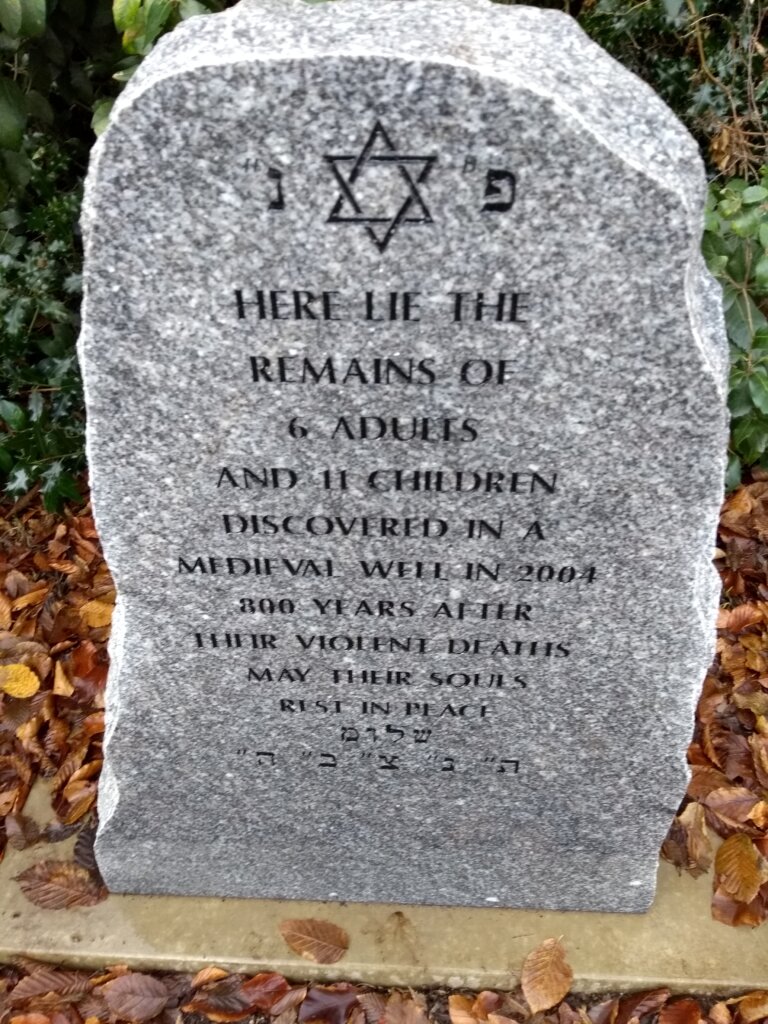What killed the Jews thrown down the Norwich well is still alive today
DNA analysis confirms the 17 dead in the Norwich well were Jewish victims of antisemitic violence

Graphic by Angelie Zaslavsky
The story of the 17 Jews murdered and thrown down a well in Norwich, England, in the 12th century is back in the headlines, and again, I find it moves me.
That doesn’t quite make sense. Whatever agony befell these people happened in the distant past, and there are so many fresh tragedies, Jewish and otherwise, that have come in the interim.
Perhaps it’s the intimate tangle of bodies, the juxtaposition of English countryside and incalculable cruelty, or the indelible fact that these murders were committed before the age of guns, bombs and gas, when neighbors chose to kill neighbors with knives, fists and ropes. Ever since first reading about the well, I refuse to let go of the image of those victims.
Now, we have more haunting details to complete the picture.
In 2004, construction workers digging foundations for Chapelfield Shopping Centre in the city northeast of London found 17 bodies at the bottom of an 800-year-old well.
At the time, scholars speculated that the remains belonged to Jews who fell victim to the antisemitic violence that wracked what was then England’s second-largest Jewish population.
In 2011, the BBC reported that DNA analysis, carbon dating and bone chemical studies helped identify the victims as Jews who were either murdered or forced to die by suicide.
The new analysis from researchers at the Natural History Museum in London, using even more sophisticated DNA sequencing, adds even more detail to the identity of the six adults and 11 children whose skeletons were found tangled in the well.
Based on well-known genetic markers, researchers have determined that the victims were Ashkenazi Jews. Three of the victims were sisters, aged 5 to 10 years old.
These 17 people were likely killed in pogroms that accompanied the Third Crusade, a war carried out between 1189 and 1192 by European kings ostensibly to wrest the Holy Land from Muslim control. The well itself was found in what was then the Jewish section of Norwich. By the time of the massacre, Jews had been living there almost 200 years, having come first from France at the behest of William the Conqueror.
“Many of those who were hastening to Jerusalem determined first to rise against the Jews before they invaded the Saracens,” wrote the medieval chronicler Ralph de Diceto, whom the scientists quoted in their press release. “Accordingly on 6th February all the Jews who were found in their own houses at Norwich were butchered; some had taken refuge in the castle.”
In other words, on their way to kill Muslims, the Christians stopped to kill some Jews.

Antisemitic rhetoric led to the murder of 150 Jews in York in 1190, the town’s entire Jewish community. In Norwich, the number of victims remains unknown.
Antisemitic violence was already ingrained in Norwich, whose Jewish community was instrumental in helping the town develop as a business center. In 1146, the world’s first instance of blood libel was recorded there, when Christians accused Jews of using a boy’s blood to make matzo before killing him. Growing libels and hatred against Jews resulted in their expulsion from England in 1290.
Those are the broad strokes of history. But it’s to the narrowness of the well that my mind returns.
One forensic anthropologist noted that the children’s bones showed no sign of fracture, likely because the broken bodies of the adults, in some cases their parents, cushioned their fall. DNA analysis of one toddler’s skeleton revealed that he had blue eyes and red hair — killed for being what was then considered the stereotypical Jew.
“I’m delighted and relieved that 12 years after we first started analysing the remains of these individuals, technology has caught up and helped us to understand this historical cold case of who these people were and why we think they were murdered,” Selina Brace, lead author on the paper, said.
I understood her excitement as a scientist, even if the word “delighted” seemed a bit off. But her bigger faux pas was in assuming the DNA and even the forensics explain the “why” of the bodies in the well.
It is that question that makes these deaths stay with me. These 17 Jews were murdered because of baseless hatreds. They were murdered because people twisted language into falsehoods. They were murdered because leaders fomented mobs they could not, or would not, control. They were murdered because they were defenseless. They were murdered because they were different. They were murdered because they refused to fit in.
They were murdered for the same reason it appears 34-year-old Israeli Eyal Haddad was murdered outside Paris on Aug. 20 by his Muslim neighbor — because he was Jewish.
When the comedian Sacha Baron Cohen in his movie “Borat” wanted to lure a mob into expressing its antisemitic tendencies, he chose, of all the chants he could have chosen, “Throw the Jew down the well.”
If you’re an English Jew, you remember. So should we all.

















